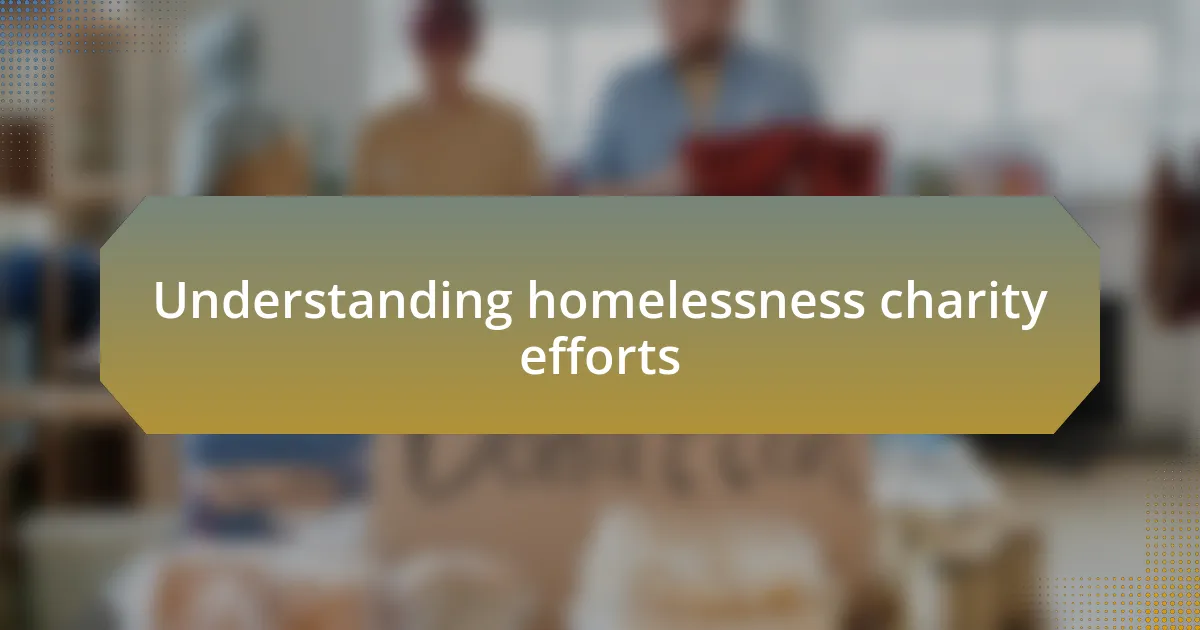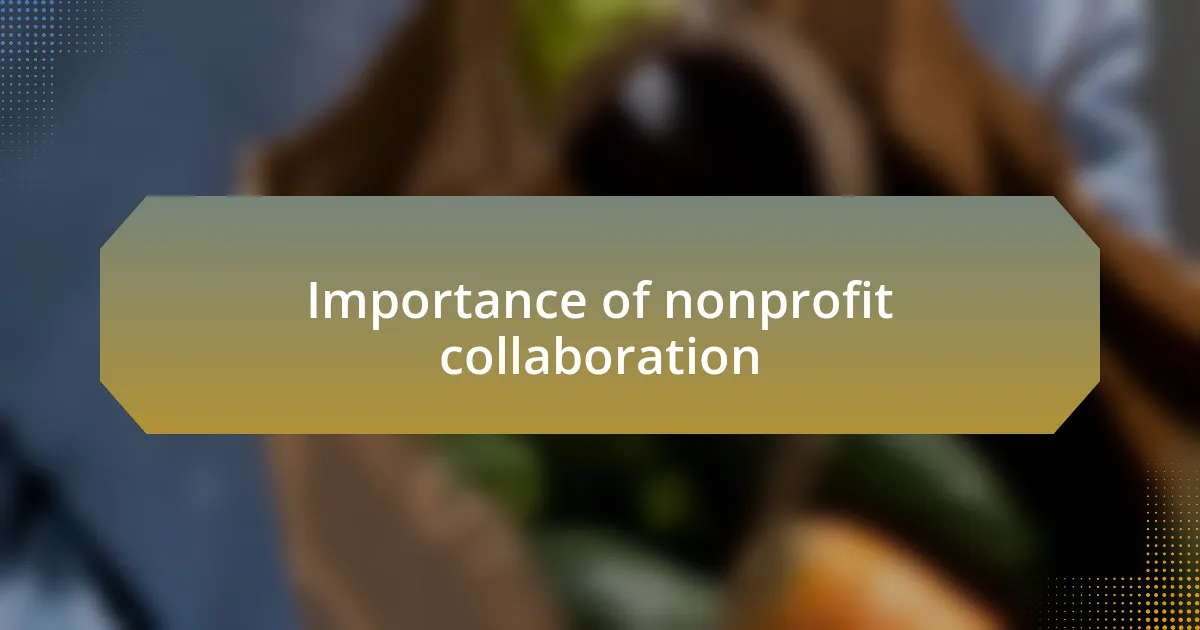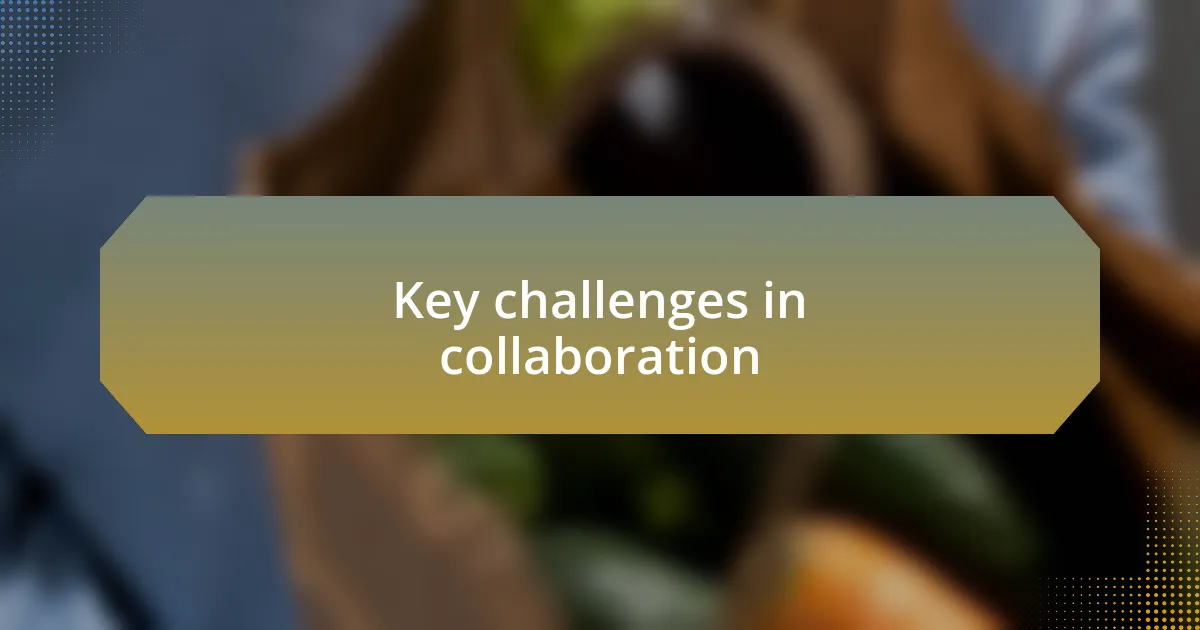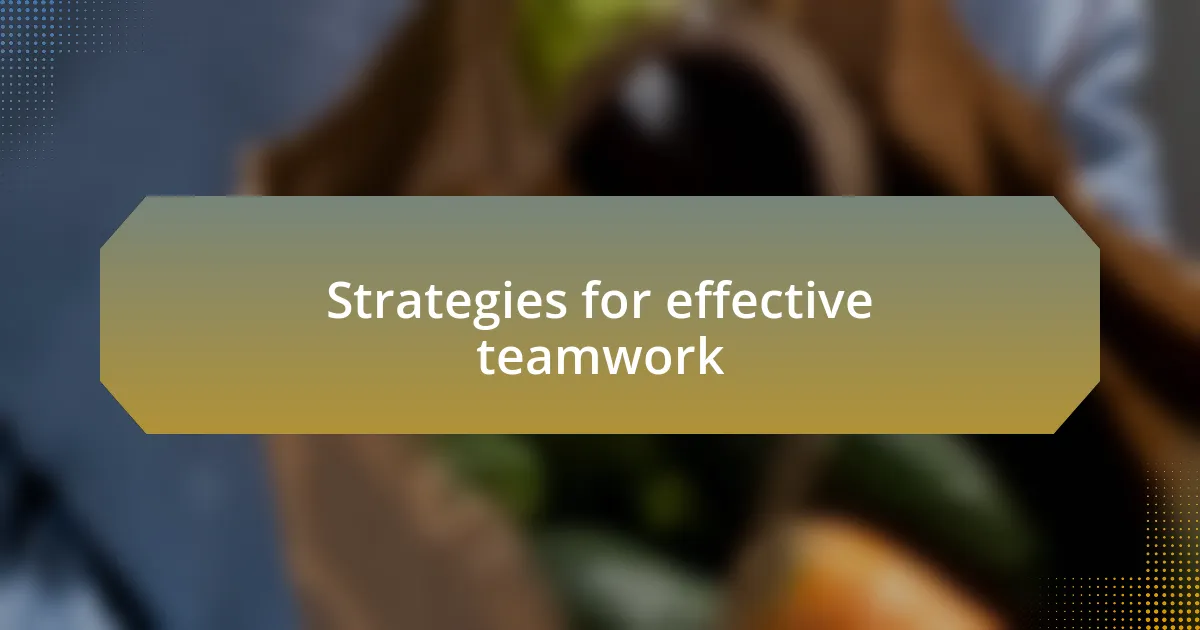Key takeaways:
- Understanding homelessness requires recognizing the personal stories and complex issues behind each individual case, fostering empathy and community engagement.
- Collaboration among nonprofits can enhance resource sharing and efficacy, but requires alignment of goals, clear communication, and respect for individual strengths.
- Celebrating small successes boosts team morale and reinforces the collective mission, which is vital for sustaining motivation and engagement.

Understanding homelessness charity efforts
When I first began working with homelessness charities, I was struck by the sheer complexity of the issue. It’s not just about providing shelter; it’s about understanding the underlying reasons people find themselves without a home. Have you ever considered what drives someone to that point? Personal struggles, mental health issues, and economic instability often intertwine, creating a challenging web that isn’t easily untangled.
One experience that sticks in my mind involved a woman named Sarah, who shared her story at one of our outreach events. She spoke of the shame and isolation that came with losing her home, revealing how those feelings pushed her deeper into despair. It was in moments like these that I realized heartfelt connections could spark real change. Donating supplies is great, but investing time to listen and understand can create a ripple effect of hope and healing.
Many people think of homelessness as a faceless problem, a statistic to be solved, but in reality, it’s about individuals with unique stories. I often wonder: how can we shift our perceptions to truly empathize with these individuals? By promoting awareness around these personal narratives, we can inspire community engagement and drive innovative solutions that address not just the symptoms but the roots of homelessness.

Importance of nonprofit collaboration
Collaboration among nonprofits is essential because it amplifies the impact of our efforts. I recall a joint initiative between several local charities focusing on homelessness. Our combined resources created a much more comprehensive support system than any of us could manage alone. Don’t you think that when we unite our strengths, we not only serve more individuals but also enrich the community?
Working together allows organizations to share knowledge and best practices, improving the overall effectiveness of our programs. For instance, during a recent community meeting, I learned valuable strategies from another nonprofit that had successfully engaged local businesses in supporting homeless individuals. It was a real game-changer for our approach. Imagine how much more we could achieve if we all shared our successes and challenges openly!
Moreover, collaboration fosters a sense of solidarity and reinforces our shared mission. In one memorable workshop, I witnessed the coming together of different organizations, each bringing its unique perspective and approach. This synergy not only enriched our individual narratives but also sparked innovative ideas that led to new services. As I reflect on that experience, I can’t help but ask: what groundbreaking solutions might emerge if we consistently prioritize collaboration in our efforts?

Key challenges in collaboration
When collaborating with nonprofits, one significant challenge I encountered was misalignment in goals and priorities. During a project aimed at providing shelter for families, I realized that while my organization focused on immediate housing solutions, others were more inclined towards long-term employment programs. The resulting confusion created delays and frustration. How do we strike a balance when our visions diverge?
Another hurdle I’ve experienced is the issue of resource sharing. In one particular partnership, my team had expertise in outreach but struggled with funding, while a complementary organization had financial support but lacked community connections. Despite our best intentions, finding a fair way to allocate resources proved to be complex. Have you ever faced a similar situation where the strengths of each partner weren’t fully utilized?
Finally, communication gaps can derail collaborative efforts. I recall an initiative where regular check-ins were promised but often overlooked. This led to misunderstandings and feelings of exclusion among team members. It makes me wonder: how can we ensure open lines of communication to keep everyone engaged and on the same page?

Strategies for effective teamwork
Effective teamwork starts with establishing clear communication protocols. In one of my experiences with a nonprofit focused on homelessness, we implemented weekly meetings to ensure everyone was aligned. These sessions not only helped catch misunderstandings early but also fostered a sense of community among team members. Have you ever noticed how sharing updates can boost morale and create a more unified team atmosphere?
Collaboration thrives on leveraging each individual’s strengths, so I always encourage defining roles based on expertise. During a project where I worked alongside a team of social workers, I recognized that my background in data analysis complemented their hands-on approach. By respecting each other’s skills, we created a more effective system to track our progress. How often do you find that assigning roles based on passion results in better outcomes?
Another important strategy is to celebrate small wins together. I remember a particular occasion when we successfully secured temporary housing for a family. By taking a moment to acknowledge that achievement, we reignited motivation and reinforced our shared mission. Isn’t it fascinating how recognizing even minor successes can propel the team forward with renewed energy?

Success stories from our collaboration
One particularly rewarding success from our collaboration with a local shelter involved organizing a community fundraising event that exceeded our expectations. I still vividly recall the moment when we revealed the total amount raised; the smiles and cheers from everyone involved were enough to affirm the hard work we’d put in. It reminded me that sometimes, it’s the collective effort of a community that truly highlights the impact we can make together.
In another instance, we coordinated a job skills workshop that transformed the lives of several participants. One individual, who had been struggling with homelessness for over a year, found a stable job shortly after completing the program. Witnessing her tears of joy as she shared her story felt like a validation of our efforts. Have you ever experienced that magic when someone’s life shifts for the better because of your involvement?
Perhaps the most heartwarming success was a holiday gift drive we ran together. We set a goal to provide holiday presents for children in need, and to see the joy on those children’s faces as they unwrapped their gifts felt indescribable. It was a powerful reminder that every little effort counts, and it left me questioning how we might continue to spread happiness beyond the holidays.

Lessons learned from my experience
One of the first lessons I learned is the importance of listening to the needs of the community. In one collaboration, I assumed I knew what the participants required, but after engaging with them, I realized their needs were far different. This taught me that genuine connection and understanding are vital for creating impactful solutions.
Another significant insight was the power of flexibility. During a project aimed at providing meals, we faced unexpected challenges due to supply shortages. Instead of sticking rigidly to our original plan, we adapted our approach and collaborated with local businesses to source alternatives. That experience reinforced my belief that resilience and creativity can turn obstacles into opportunities for innovation.
Finally, I discovered that celebrating small wins plays a crucial role in keeping morale high among volunteers and staff. After a particularly trying week, I organized a casual gathering just to acknowledge everyone’s efforts, and the positive energy that filled the room was infectious. Have you ever noticed how a simple “thank you” or a moment of recognition can spark renewed enthusiasm? It reminded me that fostering a supportive environment can make all the difference in sustaining engagements that really matter.